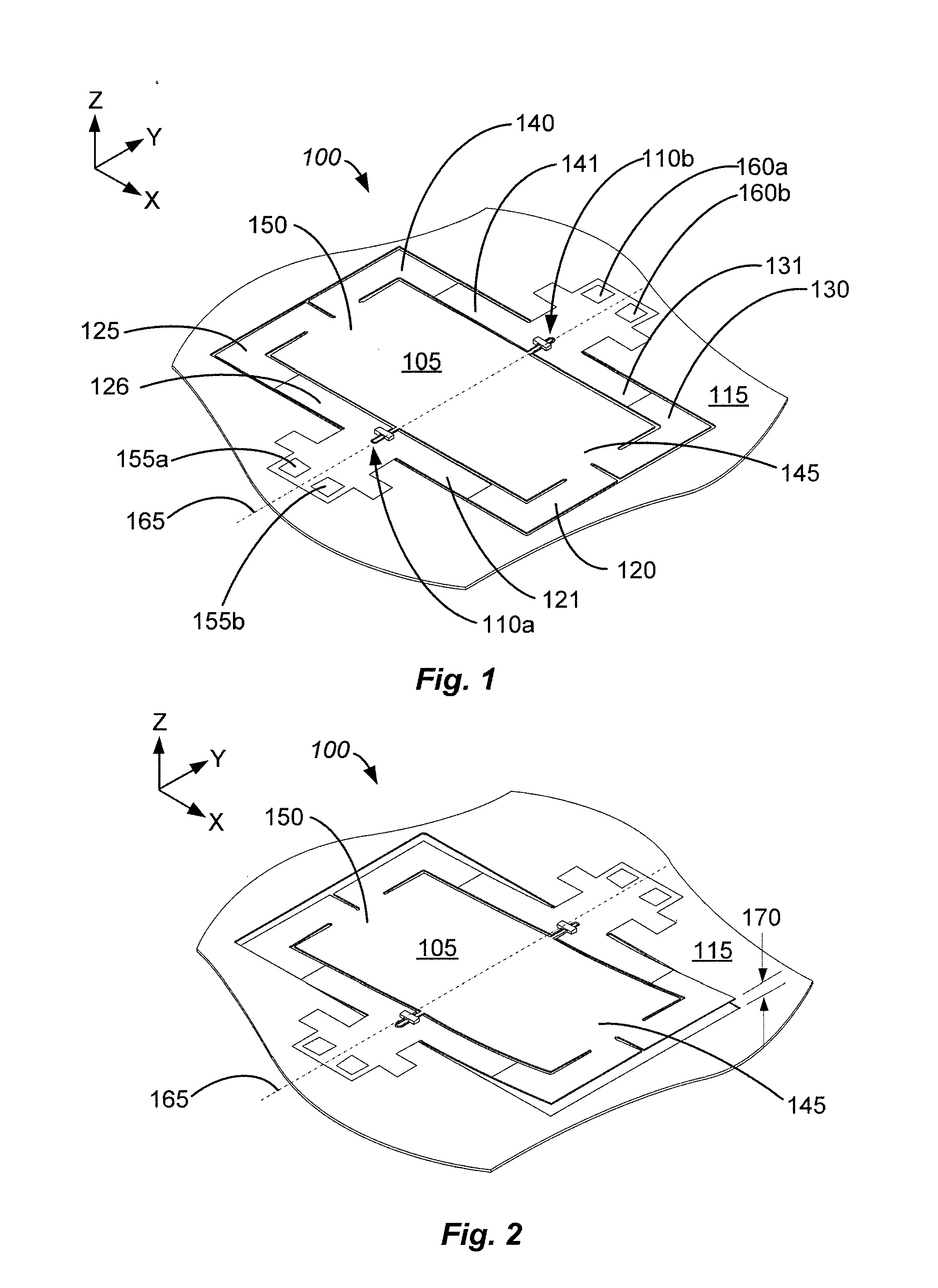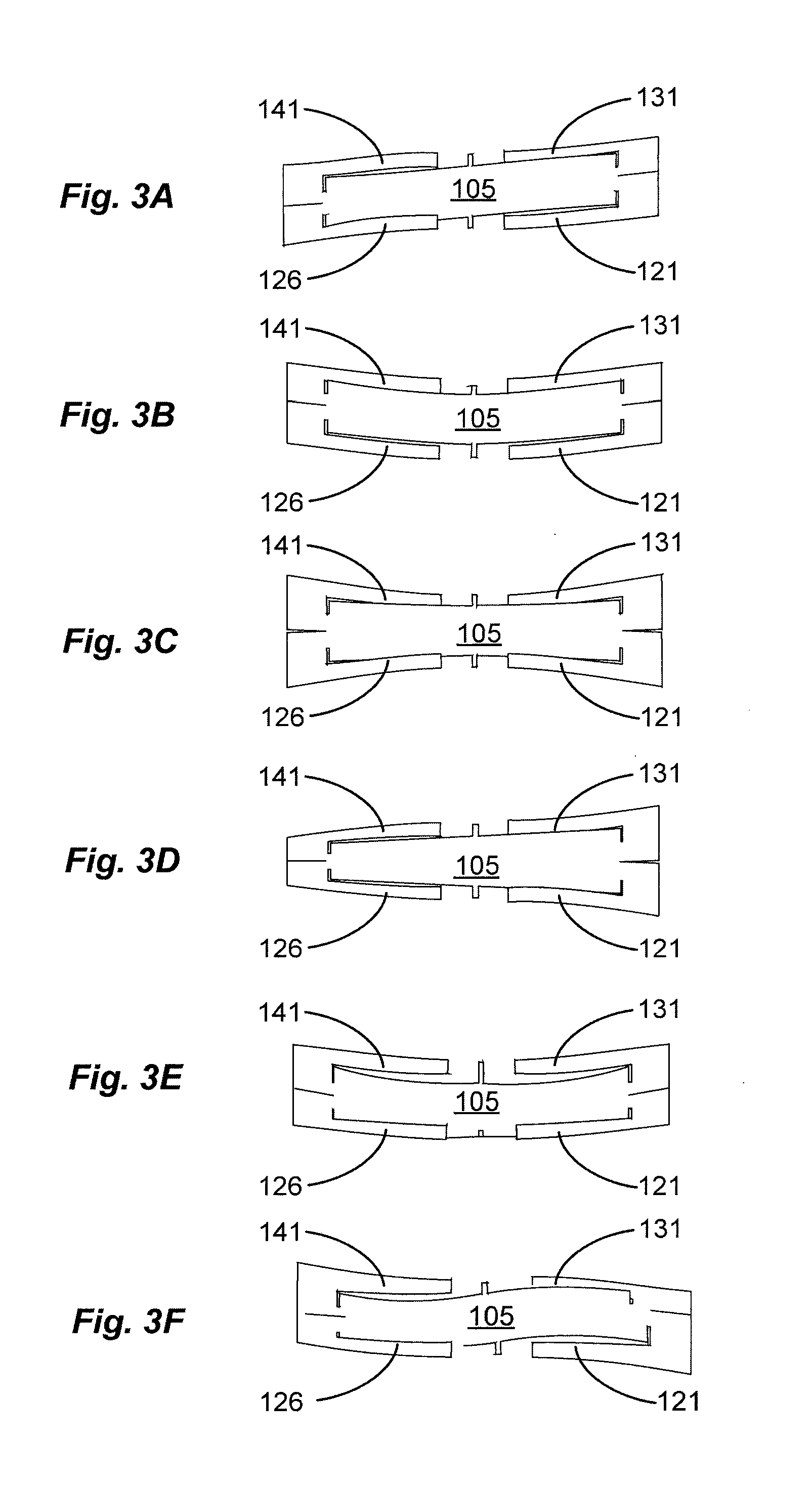Acoustic sensor
a technology of acoustic sensor and acoustic sensor, which is applied in the field of acoustic sensor, can solve the problems of complex optical readout approaches which face challenging packaging and manufacturing hurdles, and the integration of multiple sensors on a single die to realize co-located pressure gradient measurements, so as to improve the signal to noise ratio of the acoustic sensor. , the effect of improving the performance of the acoustic sensor
- Summary
- Abstract
- Description
- Claims
- Application Information
AI Technical Summary
Benefits of technology
Problems solved by technology
Method used
Image
Examples
example embodiments and simulations
[0086]Network Modeling of Multiple-Port, Multiple-Vibration-Mode Transducers and Resonators
[0087]A modeling procedure is presented for multiple-port, multiple-vibration-mode transducers. Unique features of the procedure include the use of modal coordinates to describe deformations of the mechanical structure, the use of a network analog for each vibration mode of the structure, and the selection of modal velocity, rather than a particular physical velocity on the structure, as the mechanical flow variable in each modal network. Finite element analysis is used only to compute a discrete set of salient circuit parameters, with all other analysis and design computations performed using the networks. The approach is computationally efficient and assists with providing insights into the design of actuators and micromechanical resonators, where the generation and suppression of particular vibration modes may be important. A micromachined, multiple-port piezoelectric microphone with in-pla...
PUM
 Login to View More
Login to View More Abstract
Description
Claims
Application Information
 Login to View More
Login to View More - R&D
- Intellectual Property
- Life Sciences
- Materials
- Tech Scout
- Unparalleled Data Quality
- Higher Quality Content
- 60% Fewer Hallucinations
Browse by: Latest US Patents, China's latest patents, Technical Efficacy Thesaurus, Application Domain, Technology Topic, Popular Technical Reports.
© 2025 PatSnap. All rights reserved.Legal|Privacy policy|Modern Slavery Act Transparency Statement|Sitemap|About US| Contact US: help@patsnap.com



